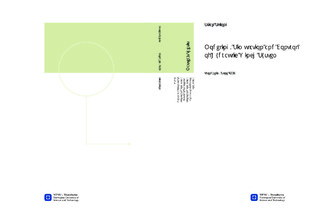| dc.contributor.advisor | Pedersen, Eilif | nb_NO |
| dc.contributor.author | Skjong, Stian | nb_NO |
| dc.date.accessioned | 2014-12-19T12:11:30Z | |
| dc.date.available | 2014-12-19T12:11:30Z | |
| dc.date.created | 2014-08-08 | nb_NO |
| dc.date.issued | 2014 | nb_NO |
| dc.identifier | 736811 | nb_NO |
| dc.identifier | ntnudaim:11433 | nb_NO |
| dc.identifier.uri | http://hdl.handle.net/11250/238860 | |
| dc.description.abstract | In this thesis a hydraulic low pressure winch system has been modeled using bond graph theory. The hydraulic winch system is assumed to be installed on an offshore vessel affected by environmental forces and disturbances such as waves and currents. The hydraulic system powering the winch consists mainly of two pilot operated 3/3-directional valves controlled by two 4/3-directional valves and a hydraulic motor. The system also includes a pressure relief valve, check valves, pump systems, piping and filters. The 3/3-directional valves are the main focus in the model and are therefore modeled with less simplifications compared to the other subsystems. A thorough model study has been initiated to figure out the model limitations, sensitivity of model parameters and the ability to simplify the derived model without loosing essential dynamics and characteristics. The effects of variable bulk modulus and fluid inertia in the 3/3-directional valves have been studied by comparing different step responses and motor load characteristics. The observations and results from this model analysis laid the groundwork for control of the hydraulic motor. A clear relation between the main valve displacements and the motor velocity and torque in 4/3 valve configuration gave reasons to believe that manual motor control done by the winch operator through control of the valve displacements was possible. Adaptive PID controllers were used as inner controllers to control the control slides in the main valves. These controllers were later on replaced with PD-controllers when outer control was derived because the adaptive controllers tended to be a bit slow. Simplified state equations describing the motor dynamics were derived for control design purposes. The state equations extracted from the bond graph model showed high complexity, containing logic and discrete quantities, and were not suitable for control design. Model based speed- and torque controllers, based on sliding mode and backstepping control theory, were derived based on the simplified equations and implemented in the model. Different load cases were initiated to test the two controllers. A lumped wire-load model containing hydrodynamics, wire- and reel dynamics and environmental disturbances such as current and heave motions of the vessel were added in the total winch model to test the controllers in different operations with varying conditions and environments. The results from these controller tests gave reason to believe that a combination of these two controllers would be favourable in certain operations and would give increased safety in extreme cases such as stuck load and loss of load. The derived speed and torque controller were put into a hybrid controller framework and a switching algorithm was designed with focus on switching stability and wanted functionalities for the winch system. It was observed that switching stability and winch functionality were closely connected and different winch operations were essential in the design of the switching algorithm. Dwell time and tracking error switching were used as the main controller switching restrictions together with functionality based switching conditions. Different simulations were initiated to test the hybrid controller such as stuck load, loss of load and landing of a load at the sea floor. A Luenberger observer was derived to estimate the motor load and the motor velocity by using the simplified state equations and the differential pressure across the hydraulic motor as measurement in order to ensure redundancy in the control system and be able to control the hydraulic winch even though the decoder measuring the hydraulic motor velocity fails. | nb_NO |
| dc.language | eng | nb_NO |
| dc.publisher | Institutt for marin teknikk | nb_NO |
| dc.title | Modeling, Simulation and Control of Hydraulic Winch System | nb_NO |
| dc.type | Master thesis | nb_NO |
| dc.source.pagenumber | 184 | nb_NO |
| dc.contributor.department | Norges teknisk-naturvitenskapelige universitet, Fakultet for ingeniørvitenskap og teknologi, Institutt for marin teknikk | nb_NO |

